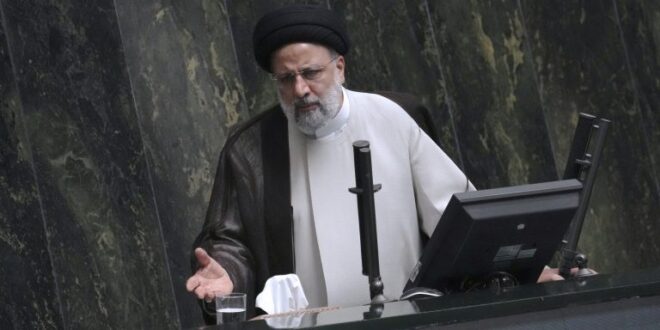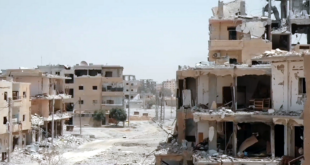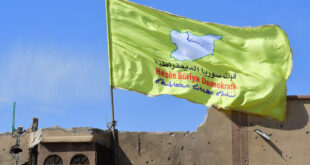- A late January drone strike on a military production plant in Isfahan, Iran, purportedly conducted by Israel, was likely intended to send a message to Iranian leaders that they are vulnerable to attack.
- The strike is unlikely to change Iran’s behavior but signals Israel’s intent to escalate if Iran continues to advance its military technology projects.
- U.S. officials appeared to tacitly welcome the strike in light of Tehran’s escalation of its uranium enrichment program, its repression of protests, and its supplies of armed drones for Moscow’s war in Ukraine.
- Iranian leaders insist that Iraqi Kurdish territory is being used to facilitate Israeli operations against Iran.
On January 28, an armed drone struck a building in the Iranian city of Isfahan, a site that is reportedly part of Iran’s defense production infrastructure. Despite social media videos of the strike exploding on the facility, Iran’s defense ministry stated that one of the three small attacking drones was shot down while the other two crashed. The purpose of the facility, and the extent of the damage is unclear. In a February 1 letter to U.N. Secretary-General Antonio Guterres, Iran’s U.N. Ambassador Amir Saeid Iravani asserted that Israel was behind the Isfahan incident. Israeli officials followed long-established policy of refusing to confirm or deny responsibility, but Israeli media appeared to acknowledge Tel Aviv’s responsibility while claiming success. The Jerusalem Post called the attack a “phenomenal success,” and sources reportedly with “direct knowledge of the attack” told an Israel-based correspondent of U.S. outlet Axios that the attack was “specific, surgical & successful.” As further corroboration, the Wall Street Journal quoted U.S. officials as saying that the raid was carried out by Israel, but some experts continued to speculate that other countries, including the United States itself, had motive and opportunity to carry out the strike. Among the other countries mentioned as possible perpetrators, Azerbaijan is an Iranian adversary and Ukraine is the primary target of Iranian-made drones supplied to Moscow.
There were differing views on the purpose of the targeted facility, but most reports described the Isfahan building as producing components for Iran’s armed drone program – a technology that has attracted substantial attention in recent months because of Iran’s supply of thousands of drones, or unmanned aerial systems (UAS), to Moscow for use against Ukraine. Alternatively, some reports asserted that the facility is involved in Iran’s ballistic missile programs, which U.S. officials describe as a growing threat to U.S. allies in the region. Yet, the precise role of the facility was likely a secondary factor in the calculations of Israeli leaders who appear to have sought, first and foremost, to again demonstrate to Tehran that Israel can strike any target inside Iran at a time and place of its choosing. Some reports indicated that the facility had already been struck previously; the semi-official Islamic Student News Agency (ISNA) asserted that the facility came under attack in 2019. In other previous operations, Israeli agents and confederates inside Iran have allegedly assassinated Iran’s foremost nuclear scientist Mohsen Fakhrizadeh, seized nuclear-related documents from an Iranian warehouse, and caused explosions at an Iranian nuclear site. Even if the facility was not directly nuclear-related, Israeli leaders, including Prime Minister Binyamin Netanyahu, who recently returned to power again in Israel, assert that Iran’s nuclear program is an “existential threat” to Israel. They were particularly alarmed by the January 2023 International Atomic Energy Agency (IAEA) report that Iran has enough enriched uranium, if processed further, needed for several nuclear weapons. By striking the Isfahan facility, Netanyahu’s government signaled that further strikes are likely if Tehran continues to advance its nuclear program.
American, European, and U.N. officials, who continue to try to restore a diplomatic pathway to limit Iran’s nuclear program, have sharpened their criticism of Tehran in recent months because of its support of Russia’s war effort in Ukraine. The Isfahan strike came as U.S. Secretary of State Antony Blinken began a trip to the Middle East where he concurred with Israeli views on the growing threat from Iran. In echoing Israeli assertions about Iran, Blinken gave the impression of U.S. support for the Isfahan attack. As a further indication of U.S. support for Israel’s position, on February 3, the Treasury Department’s Office of Foreign Assets Control (OFAC) sanctioned eight senior executives of Paravar Pars Company, an Iran-based firm that manufactures Shahed-series unmanned aerial systems (UASs) for Iran’s Islamic Revolutionary Guard Corps Aerospace Force (IRGC ASF). According to Under Secretary of the Treasury for Terrorism and Financial Intelligence Brian E. Nelson, Iran is “supplying UASs for Russia’s combat operations to target critical infrastructure in Ukraine.” At the same time, the sanctions announcement demonstrated that the United States and Israel differ in their approaches to the Iran threat, with divergent approaches to using diplomacy and military tools, respectively.
The strike on Isfahan also introduced new tensions between Iran and neighboring Iraq which, for two decades, has been an arena for U.S.-Iran competition. Iran has long accused the Kurdish-controlled areas of northern Iraq – an autonomously governed “region” under Iraq’s constitution – of hosting armed Iranian Kurdish opposition groups and of facilitating or tacitly permitting Israeli operations against Iran. On February 1, the media affiliate of Iran’s Supreme National Security Council (SNSC) alleged “Kurdish counterrevolutionary involvement” in the Isfahan strike, claiming that the three small drones were “transferred to the country by counterrevolutionary Kurdish groups” and “assembled in a well-equipped workshop” in Iran. The Iranian official media report also criticized Iraqi authorities for failing to disarm Iranian Kurdish opposition groups based in Iraqi Kurdistan, suggesting that Iran views Baghdad as capable of pressuring Iraqi Kurdish officials to stop foreign intelligence operations on their territory.
In recent months, Iranian forces have launched strikes on Iranian Kurdish opposition positions in northern Iraq, asserting that anti-Iran Kurds were smuggling weaponry through Iraq for use by Iranian protesters. In March 2022, Iran launched a missile strike on what it said was an Israeli “strategic center” near Erbil, the capital of Iraqi Kurdistan, suggesting the degree to which Tehran believes Israel is using northern Iraq as a base. More broadly, Iranian leaders appear frustrated that, even though pro-Iranian factions form the backbone of the government of Prime Minister Mohammad Shia al-Sudani, Iranian influence in Iraq appears to have diminished relative to that of the United States. Iranian leaders are likely to act more forcefully against Kurdish groups in Iraq – with or without Baghdad’s approval – if Israeli attacks on Iran continue.
 Eurasia Press & News
Eurasia Press & News




